Do you have a call center team that manages inbound and outbound calls? If yes, you should give them a line and direction they must commit to. Call center phone etiquette should comply with the brand's image that you aim to achieve.
Verbal communication is a key way for customers to share their needs, questions, and complaints. Customers can reach sales, technical support, customer service, or marketing by making phone calls.
Calls should be professional and of high quality. Every agent has a unique voice to show who they are and the company they represent. However, there should be common traits in all calls at your center. That's what we call etiquette!
A call center agent who understands conversation rules and phone etiquette feels confident. They adapt to the client and complete their tasks.
Let's give some advice to all who are trying to master call handling etiquette. This will help you communicate better with the client. It will also help build skills in the person on the other end of the line.
Today, the customer-centric approach has become a standard among companies. Customer expectations are rising, and competition among businesses is increasing. This means that providing great customer service is essential. Excellent communication skills are now a key strength for call center agents.
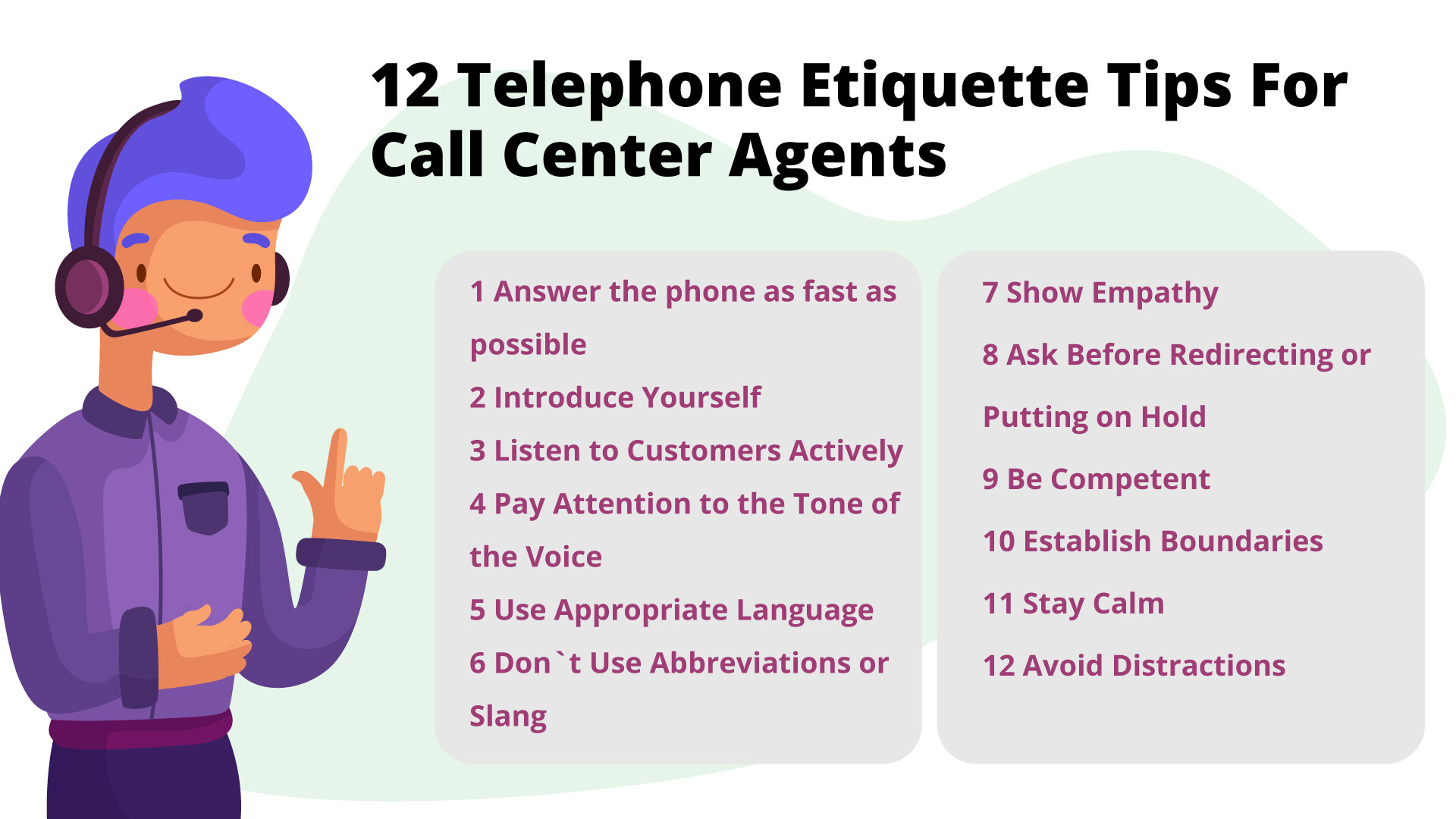
What is Call Center Telephone Etiquette?
Call center telephone etiquette is the communication style agents use to interact with customers over the phone. The rules of etiquette match the common values in society. Customers follow these values and the company’s culture.
These manners and practices show how we greet others. We use the right words for each situation and pick the right tone of voice. Active listening is very important. It includes all the actions that lead to customer satisfaction during the call.
Why Is Call Center Phone Etiquette Important?
Call center phone etiquette in your company is a valuable asset you cannot afford to lose. This item might affect the destiny of some clients’ retention. Because of phone etiquette, some would become loyal customers, while others would become former clients. This affects your client base as a result.
A study by researcher Esteban Kolsky found that 72% of customers share their best customer service experiences. This includes experiences with call centers, and they often tell six or more people.
Why don’t you make your company one of the experiences your customers talk about? Good etiquette for call center agents is important. It helps build a strong reputation based on honesty. This can help you grow your customer base quickly.
12 Call Center Agent Etiquette Tips
With every call the agent receives or makes, where the other side of the call is the customer, he becomes more accountable.
Even if it is not the first call the new agent makes or receives, he should remember the basics of etiquette before each call. By practicing, his level of proficiency improves, and there will be no need to revise. In the following list, we’re offering you the most essential 12 tips for call center agent etiquette with customers. Share it with your team:
1- Answer The Phone as Fast as Possible
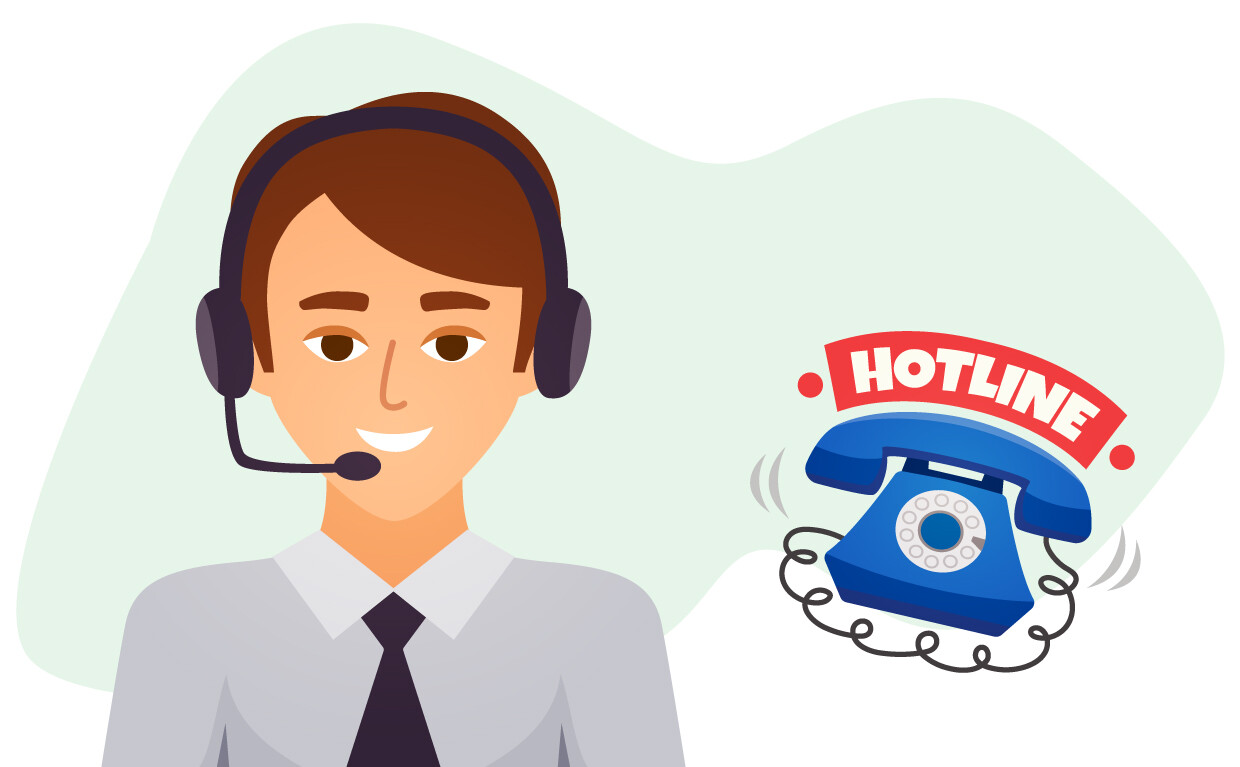
Don’t intentionally make your customers wait for you to answer the phone. Always try to answer within three rings. Otherwise, customers may feel annoyed.
If no one is available at the moment, the waiting time to speak to a customer service agent can sometimes exceed three rings. In these cases, a solution must be found. For example, callers could be given a welcome message and informed of the expected waiting time.
2- Introduce Yourself Properly
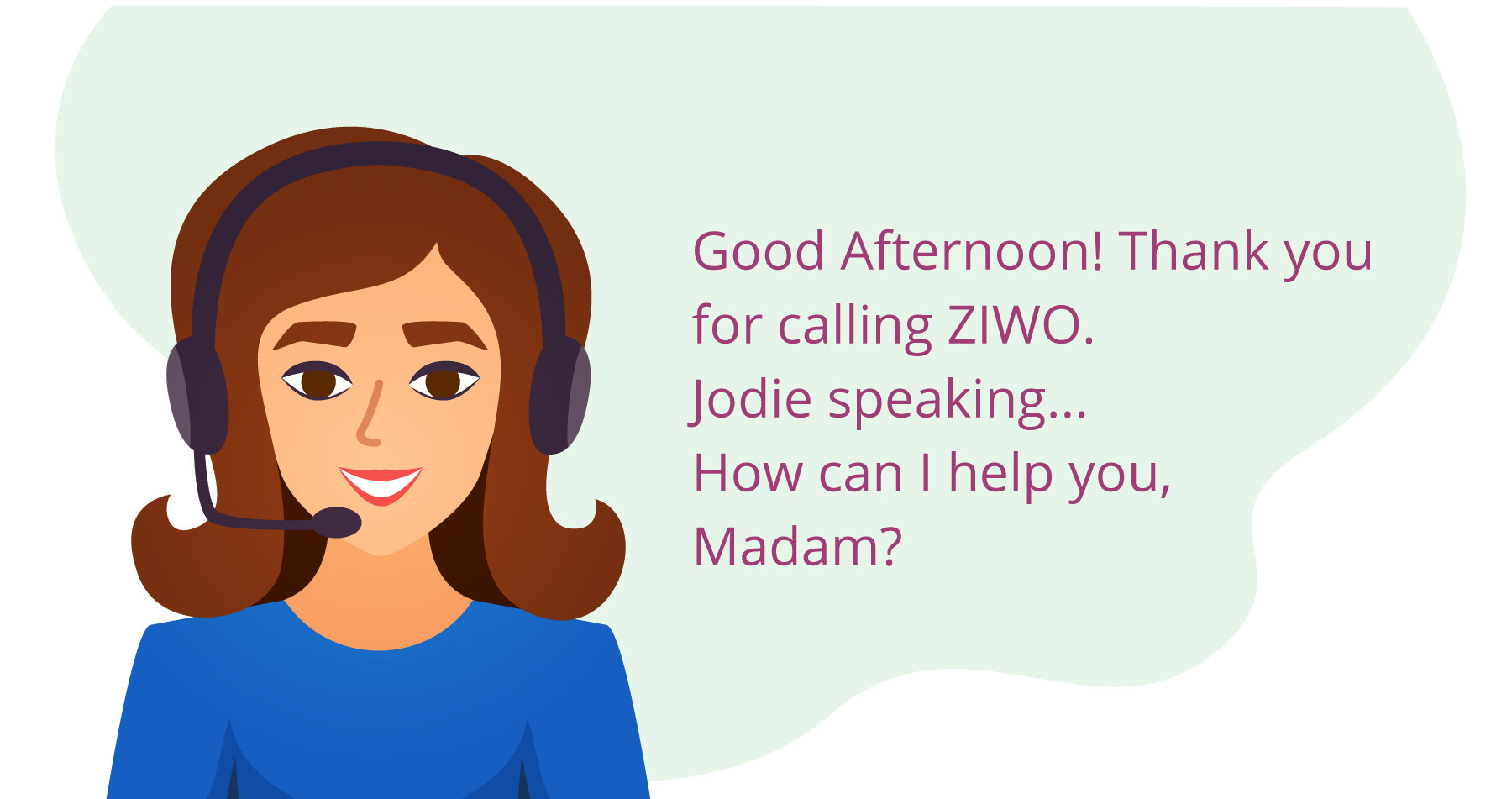
When making personal calls, you can simply start a conversation with “Hello.” When making business phone calls, always introduce yourself and ask the caller about their name, for two reasons:
- The customer may have provided their information earlier. You can verify the caller’s identity during the call, especially in retail banking.
- It might be the first time the caller approaches the call center; he hasn’t converted yet and is still thinking about it. This makes his data an excellent way for retargeting campaigns. Thus, the marketing team sends offers and messages that drive them to purchase. Also, one of the sales team members will try to convince the prospect that no conversion will occur by the end of the call.
If the center is the party that started the call, you must mention the name of the company you represent and the department you belong to, if available. After introducing yourself, no more than 30 seconds should pass before telling the customer why you’re calling, or else he’ll end the call without permission.
Sometimes, the phone numbers within the company are very similar, and dialing errors can happen to anyone. To give your interactions a friendly start, ask the caller pleasantly, “How can I help you?” This will create a positive atmosphere from the very first minute of the conversation.
You should customize the greeting based on the local time of the customer you’re calling. If it’s night, you can start the call with “Good Evening, Mr./Mrs. …!” If you call him early in the morning, say: “Good Morning, Mr./Mrs …!”
If you’re unsure of your customer’s geographic location, you can just say “Hello, Mr./Mrs. …!”
Could you customize the customer experience from the minute he accepts the call? This would help him feel that he’s communicating with a familiar person who knows him well.
3- Listen to Customers Actively
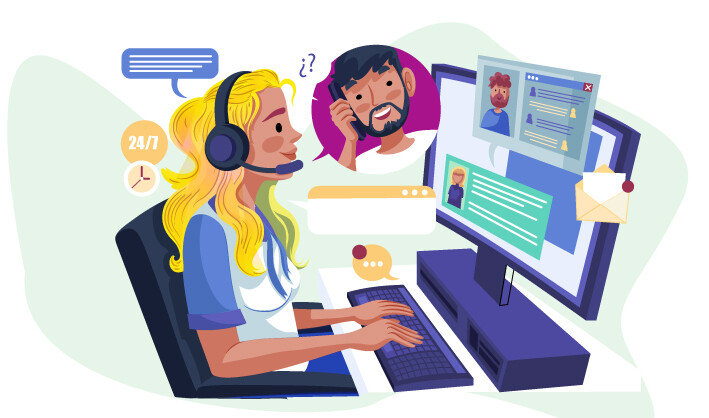
You need to listen to your callers actively during every business phone call. This means paying attention to all information and comments, taking notes, and responding appropriately to customer complaints, not just with phrases taken directly from the scripts.
Of course, some guidelines must be followed, but give your conversation a personal touch to make the callers feel that you care about them and are willing to solve their problems. Active listening also means not interrupting. Take notes to remember what details might be helpful, but never interrupt when the other person explains their problems.
You should never get your mind distracted from the customer. You can not eat, drink, or make any noise that affects the customer’s discussion. This helps you keep calm and provide suitable responses to the customers’ queries and issues.
Commit to active listening to increase your concentration and understanding of what matters to the customer, the query objective, or the issue they’re facing. Repeat what the customer has told you using your words to ensure you understand correctly.
4- Pay Attention to The Tone of The Voice and Pitch

Voice is an essential factor in callers' perceptions of operators. To connect with customers and show that you care, you must use a friendly tone and a consistent volume throughout the call.
Avoid sounding anxious, pushy, or like a salesperson. Make an effort to appear friendly and professional. Even if customers seem frustrated or angry, you must stay calm and handle the situation kindly.
Find a perfect balance between speaking too loudly and speaking too softly. Never scream, but make sure customers can hear you properly.
Avoid the monotonic voice, for several reasons:
- Monotone lets the customer feel bored as you give an impression of the same feeling.
- You might have delivered the information he needs, but the customer misses some of the points he needs because of the call's length. This results from not focusing on the words and not notifying him of the most important sentences in the conversation. Try pronouncing the critical terms in the most unmistakable voice and the highest acceptable tone.
- Mention the customer’s name at the end or the beginning of every sentence he has to remember.
Even if the customer can not see you, your body language is key in the call center. How you sit affects how your voice reaches the customer. Do you feel dull or excited? Neutral or empathetic?
ZIWO’s Advice: Try to smile during the call, as long as the customer doesn’t discuss an issue or a complaint. The smile transfers to the customer through your tone of voice. When the customer ends a call with pleasure, be sure you’ve acquired a loyal customer.
5- Use Appropriate Language
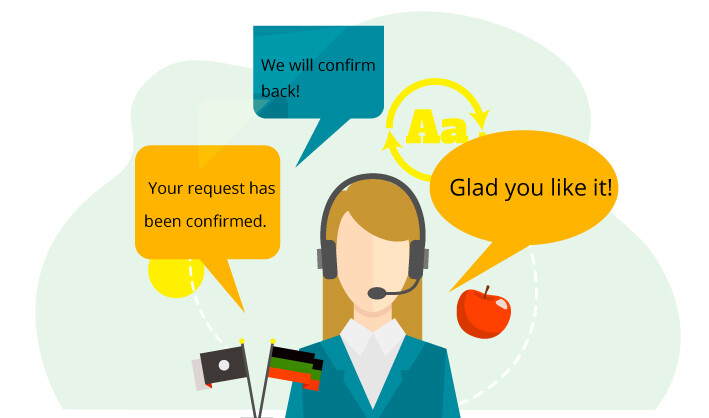
Another apparent difference between personal and professional calls is language. To avoid even unintentionally offending a customer, it is good to stick to formal language and avoid jokes. You can never be sure what may upset your callers, so it’s best to be polite.
6- Empathy, Empathy, Empathy!
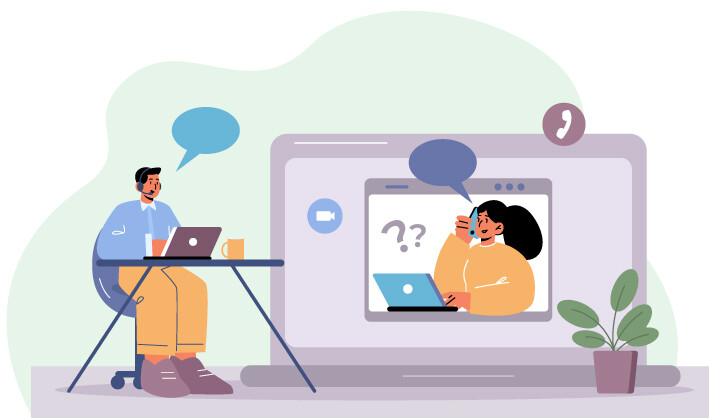
Quite often the customer service team has to solve problems that are annoying and frustrating for customers. Don’t give them any more reasons to be angry. Show sympathy and understanding for customer situations.
No call center phone etiquette without empathy. As a standard way of telephone etiquette, you need to emphasize that your company cares about customers and will try to resolve any unfortunate events that have occurred in the past. You never know when customers are having a bad day, so there’s no harm in staying cheerful and helping your brand build loyal customers.
Empathy is not only about negative feelings. If you interact with customers’ positive engagement below expectations, positivity turns into negativity.
Here are the most common templates and text samples that are ready to use and support applied call center telephone etiquette, situation-based:
- The Customer Feels Disappointed:
“I respect your disappointment that the relevant authorities did not accept your application. Let's review the steps we have already taken to specify the source of the rejection.”
- The Customer Feels Anxious:
“I understand your concern, and I believe there is no need for it as long as the results of our efforts are revealed after the agreed-upon period. We will share them with you when they are released!”
- The Customer Feels Dissatisfied:
“I reiterate my regret for not achieving the results we expected. However, I would like to clarify that the results are less than expected by X%. After analyzing the situation, we arrived at the reasons that led to this, which are as follows:…” (Explain the reasons in points.)
- The Customer Feels Afraid:
“I understand your concerns about a similar problem occurring in the future. Let's take every precaution to ensure it doesn't happen again!” (List the precautions taken)
- The Customer’s Feeling of Shock:
“On behalf of our company, I sincerely apologize for this unacceptable situation. The person responsible will be dealt with directly.”
- The Customer’s Feeling of Confusion:
“It's clear that you're not finding it easy to get your order done when using our website/app. Let's take a quick tour to help you have a better experience!"
- The Customer’s Feeling of Excitement:
“Customers' enthusiasm for our products is the source of our confidence in the next steps. On our company's behalf, I sincerely thank you for your belief in us.”
- The Customer’s Feeling of Gratitude:
“We’re grateful for providing sufficient support to you, we’re always ready to serve you!”
ZIWO’s Advice: When you interact with a customer, remember the following rules:
Positive Feelings (Customer) + Positive Responses (Agent) = Positive Result
Positive Feelings (Customer) + Negative Responses (Agent) = Negative Result
Negative Feelings (Customer) + Empathy (Agent) = Positive Result
Negative Feelings (Customer) + Negative Responses (Agent) = Negative Result
7- Ask Before Redirecting or Putting a Customer on Hold

Sometimes customers call the company because they have more than one problem to discuss.
If you need to transfer a particular customer to the right operator who is most qualified to help you, you need to ask if this is acceptable to the customer.
It also explains why it is needed. This way, customers will understand why they must explain their problems to another person again. Sometimes, you have to put a customer on hold to verify some information.
Don’t pretend you know the answer if it is the other way around. To help your customers in the best way, you can take the time to find the most accurate answer.
Ensure your interlocutor is willing to wait and inform yourself of how long it will take and, once again, whether it is necessary.
If we need to summarize the previous steps to reduce the call abandonment rate and respect the customer’s time as expected, they are as follows:
1- Determine the action you need to take (Assuring that the information is correct from the team leader or the supervisor, customer transfer to another call agent, …)
2—Clarify the action from your point of view, anticipate the waiting time he will have, and receive his approval.
3—Put the headset on mute and check if the agent or employee to whom the customer will be transferred is available or about to end an ongoing call.
4- If the customer confirms the action, put him on hold to enable the other agent to accept the transferred call.
5- If the customer refuses to wait, schedule a callback when another agent or the same agent, according to the shift, will offer the details.
8- Stay Competent

The customer-facing team is essential to building your brand’s image of trustworthiness. Agents need to demonstrate a certain level of knowledge, which is why it is necessary to provide training on your products or services and on the industry itself.
Invest time in this process to prepare your team to provide excellent customer service. Think about how to handle highly complex matters. How can agents contact the experts to find the right solutions?
Design these scenarios and gather this information to share knowledge and allow your agents to learn from experience. Your employees need to be confident in their actions when talking to customers.
No successful team should lack a cooperative spirit; it’s the core of any work. However, the positive competition is part of any team whose members must develop their skills. This invariably drives the business to achieve its objectives faster.
9- Don’t Use Abbreviations or Slang
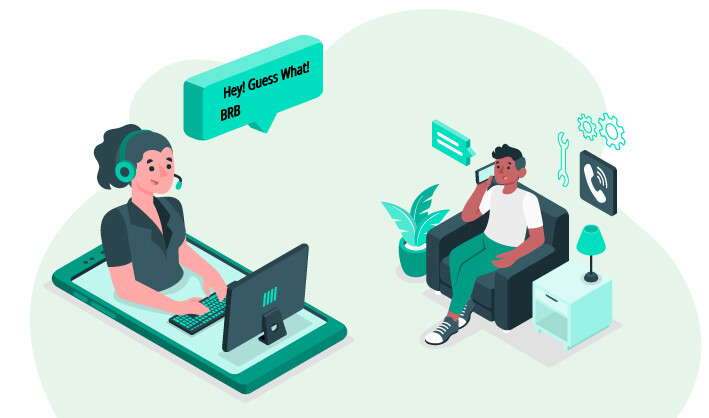
It is essential to let others understand you clearly. To do this, it is good that you avoid acronyms, local words, and abbreviations. Dissolve every abbreviation and slang word.
Use a language that is precise and appropriate to the skills of those at the table, of course, but always ask yourself first if that word you are about to say is known only in the restricted circle of employees in your sector or if it will be understood by everyone.
If the customer is currently facing a technical issue, you should first try to explain the reasons and solutions. In most cases, clients don’t have sufficient knowledge or experience, so they should understand the current situation, especially if it affects the offered service.
You should follow the next steps:
1- Determine the main reason that unleashed the issue.
2- Explain the reason to the client using straightforward expressions free of technicalities. Ensure that he has completely understood! (Remember that we serve the customer, not undervaluing his knowledge or experience)
3- Clarify the available solutions for the issue and mention the results of every resolution transparently. Ensure that the client understands every solution separately. Recommend the best solution from your perspective as a technical specialist.
10- Establish Boundaries

Sometimes customers demand too much from operators. Not all aspects can be handled by customer service or a company. It may be helpful to share team skills and responsibilities documents with customers.
This way, you can explain what you can and cannot do. Such a document can lend credibility to your words.
11- Keep Calm

The customer may also ask to remain online until a particular problem is resolved. However, solving problems, especially technical ones, sometimes takes time.
In these situations, customers can be very determined and frustrated. One major piece of telephone etiquette is to stay calm and explain your follow-up plan professionally.
Assure the interlocutor that you will carefully review their case and do everything possible to stop the problem from escalating.
12- Turn-Off Distractions
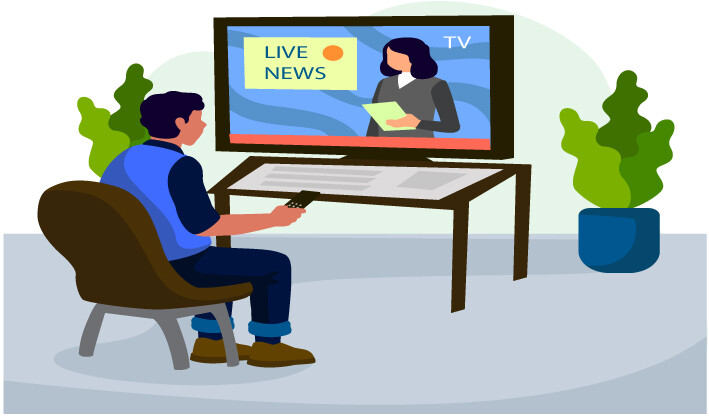
Holding the phone while watching a video on the screen. If you are on a call, you are on a call. Do not get distracted by the TV, colleagues, watching videos, or playing games.
Don’t talk to anyone around you (regardless of whether you have the microphone on), and don’t do anything else. Believing that you can multitask could cost you dearly. You could miss an essential part of the conversation and find yourself with one less element when you work on what has been decided and planned in the meeting.
Telephone ETIIQUETTE Conclusion

We hope your team can benefit from the tips presented above. Your call center supervisors probably also have techniques related to telephone etiquette and tips for call center agents that can be applied by the whole team. Brainstorm, share ideas, and ask your colleagues for their opinions because they are the ones who confront customers daily. Everyone can contribute to your company’s phone etiquette by sharing their experiences and insights.
This way, you can create the correct rules for the team targeting customers. Once all agents know the guidelines and are ready to engage with customers, they can help you create a positive and trustworthy image of your brand.





